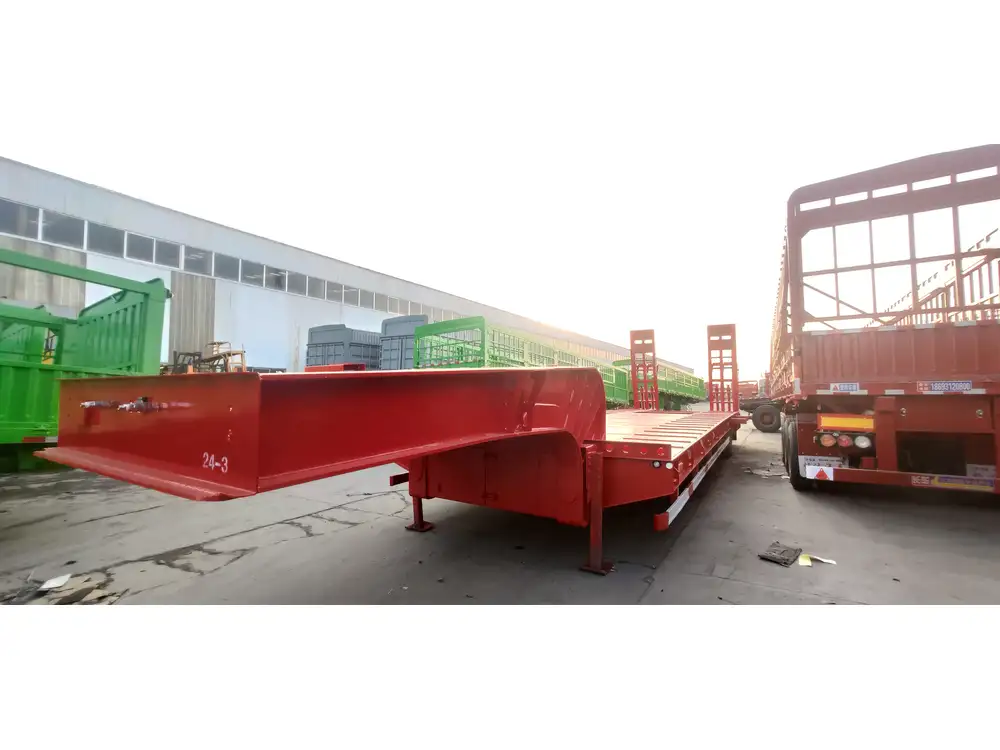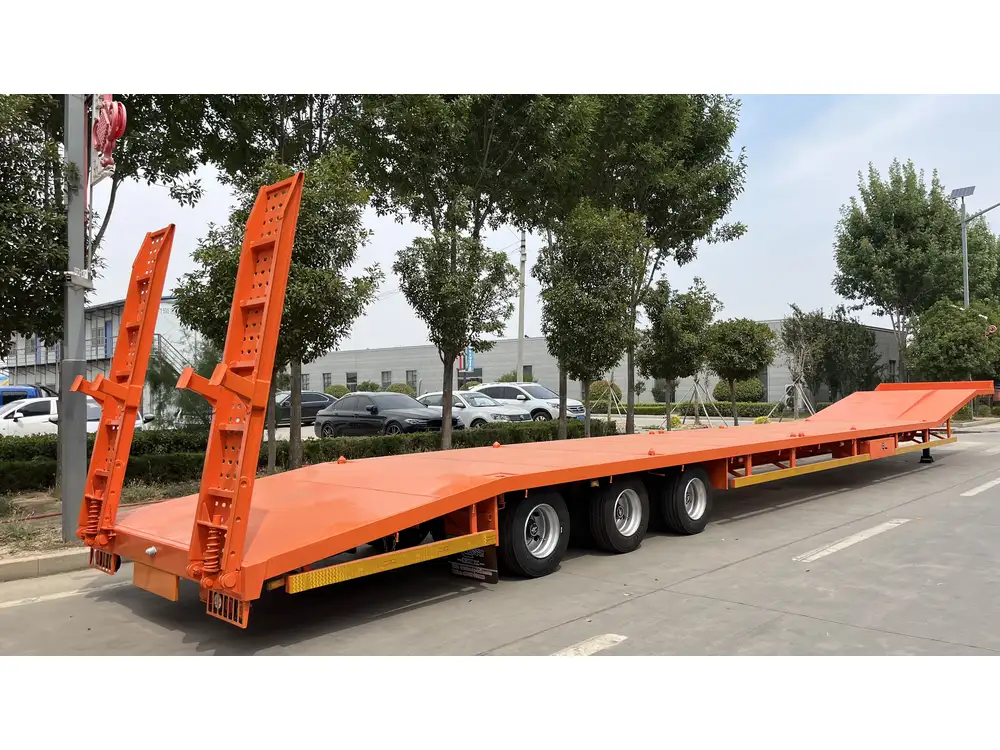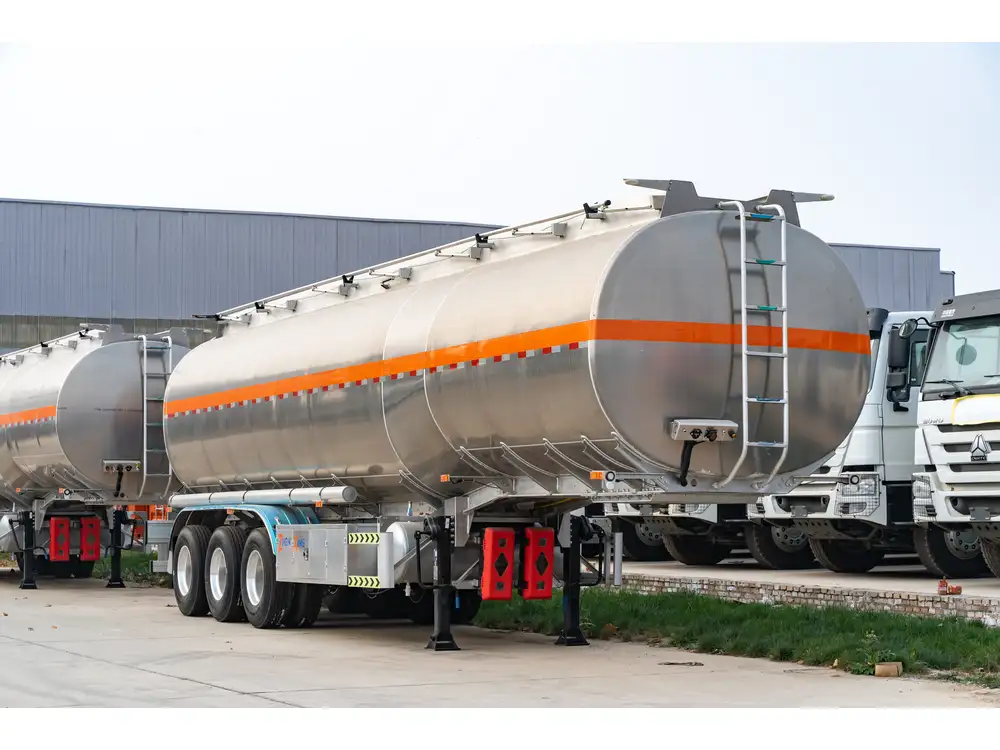When it comes to maintaining and enhancing the life of your dump trailer, the type of paint you choose is crucial. The right paint not only enhances the appearance but also protects against rust, corrosion, and wear. In this detailed guide, we’ll delve into various paint options, application methods, and maintenance tips to ensure your dump trailer remains in peak condition.
Understanding the Environment: Why Paint Choice Matters
Dump trailers are exposed to harsh environments. They often carry heavy loads, experience abrasive materials, and face varying weather conditions. Therefore, your paint selection must withstand these challenges. Key factors to consider include:
| Factors | Impact on Paint Choice |
|---|---|
| Material Composition | Determines adhesion and durability |
| Load Type | Affects wear and tear resistance |
| Weather Conditions | Influences paint durability and protection from elements |
| Operating Temperature | Impacts the application process and curing times |
Types of Paint Suitable for Dump Trailers

1. Acrylic Enamel Paint
This paint is known for its smooth finish and durability. Acrylic enamel creates a tougher, more resistant surface that is perfect for high-impact environments like dump trailers.
Pros:
- Dries quickly
- Excellent UV resistance
- Easy to clean
Cons:
- Requires a good surface preparation
- Can be affected by water if not allowed to cure properly
2. Urethane Paint
Urethane paint offers superior protection against chemicals, weather, and abrasions. It’s highly rated for automotive and industrial use.
Pros:
- Exceptional durability and flexibility
- Gloss finish retains color over time
- Resistant to rust and corrosion
Cons:
- Can require special equipment for application
- Higher cost compared to acrylic options
3. Epoxy Paint
Epoxy paints are a popular choice for heavy-duty items like dump trailers. These paints create a hard, protective coating that adheres well to metal.
Pros:
- Strong adhesive properties
- Offers excellent chemical resistance
- Often more affordable than other professional-grade options
Cons:
- Longer curing time
- Requires a topcoat for UV protection

4. Polyurethane Paint
Polyurethane paint is another top contender due to its resistance to abrasion and chemicals. Plus, it offers a glossy finish that enhances appearance.
Pros:
- High performance in extreme conditions
- Excellent longevity and protection
- Good for maintaining aesthetics
Cons:
- Application can require experience
- Expensive relative to other paint types
Factors to Consider When Selecting Paint for a Dump Trailer
Surface Preparation
Regardless of the type of paint you select, proper surface preparation is critical. Start with these steps:
- Clean the Surface: Remove all dirt, grease, and loose paint.
- Sand Down Rust: Use sandpaper or a wire brush to eliminate rust patches.
- Priming: Invest in a high-quality primer to enhance adhesion and protect against corrosion. A zinc-based primer can be particularly effective for metals.

Environmental Conditions
The weather affects paint application and curing:
- Temperature: Ensure you’re painting in temperatures between 50°F and 90°F for best results.
- Humidity: Low humidity is preferred; high humidity can interfere with drying.
Application Methods for Paint
Spray Application
Using a spray gun gives you a smooth application, perfect for complex shapes and hard-to-reach areas.
- Steps:
- Prepare the spray gun according to the manufacturer’s specifications.
- Maintain a distance of 10-12 inches from the surface during application.
- Apply multiple thin coats, allowing some drying time in between.

Roller Application
This method is best for flat surfaces and offers good coverage.
- Steps:
- Use a high-quality roller suitable for the paint type.
- Apply a generous coat and roll it out evenly.
- Ensure smooth strokes to avoid bubbles.
Brush Application
For smaller touch-ups or areas needing detail, a brush may be your best bet.
- Steps:
- Use a brush with synthetic bristles for acrylics and natural bristles for oil-based paints.
- Paint in the direction of the grain to reduce brush marks.
Maintenance Tips After Painting

Initial Curing Period
After painting, give your trailer ample time to cure. Epoxy and urethane paints may take 24-72 hours to cure fully. Monitor temperatures and humidity during this period.
Regular Inspection
Check your trailer periodically for signs of wear, rust, or chipping:
- Inspect for paint cracks or bubbles.
- Address any scratches or chips immediately with touch-up paint.
Cleaning and Upkeep
To prolong the life of your trailer’s paint, establish a regular cleaning routine:
- Rinse with clean water after use, especially after hauling corrosive materials.
- Use non-abrasive cleaning agents suitable for the paint type.

Conclusion: Making the Right Choice
Selecting the appropriate paint for your dump trailer is essential to ensuring longevity and maintaining its utility in tough working conditions. By considering the factors detailed above, like environmental challenges and most suitable paint types, you can make an informed decision that protects your investment.
Summary of Recommendations
- For maximum durability in harsh environments, urethane paint is a prime choice.
- If cost is a concern, epoxy paint strikes a balance between quality and affordability.
- Always prepare your surface thoroughly and be mindful of application conditions for optimal results.
Feel free to consult with local paint suppliers or experts for the latest advancements in coatings specifically tailored for dump trailers. A well-maintained dump trailer is not only a more reliable workhorse but also retains its value over time.



